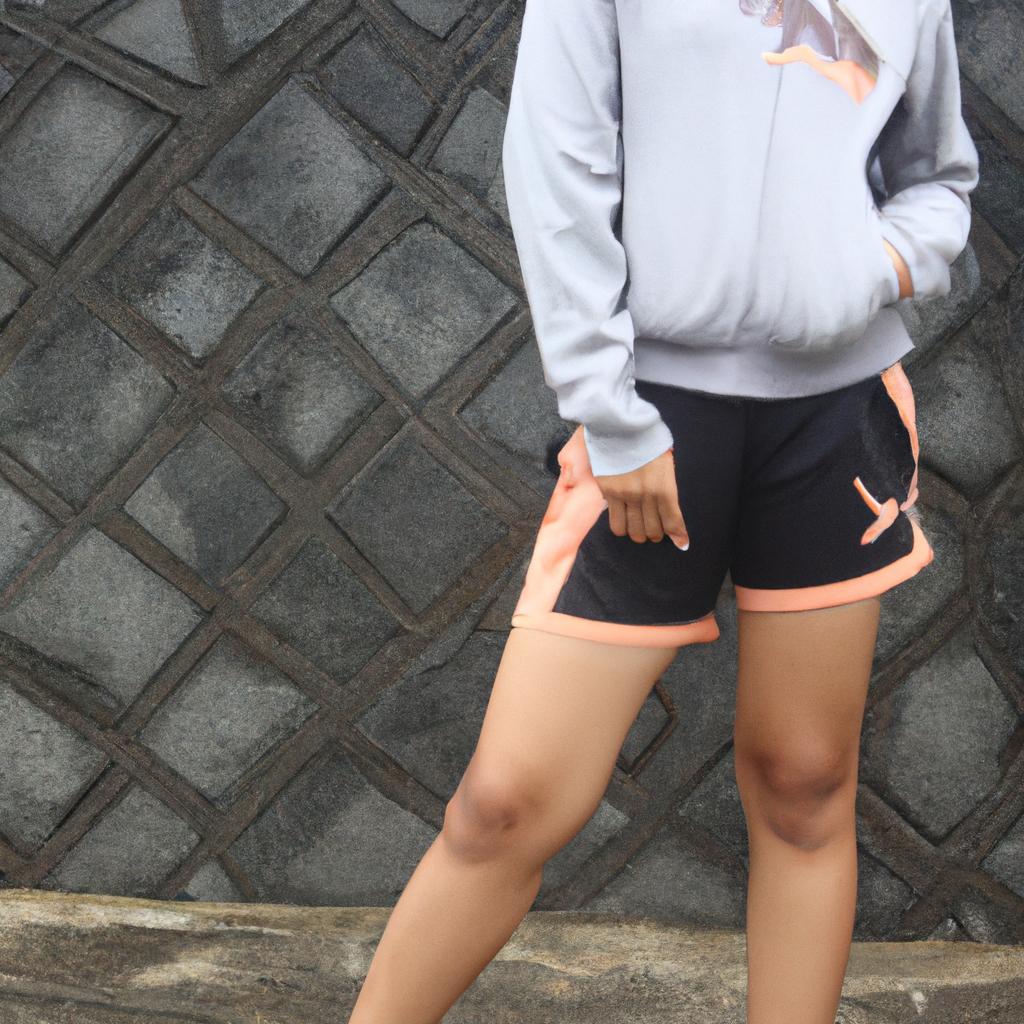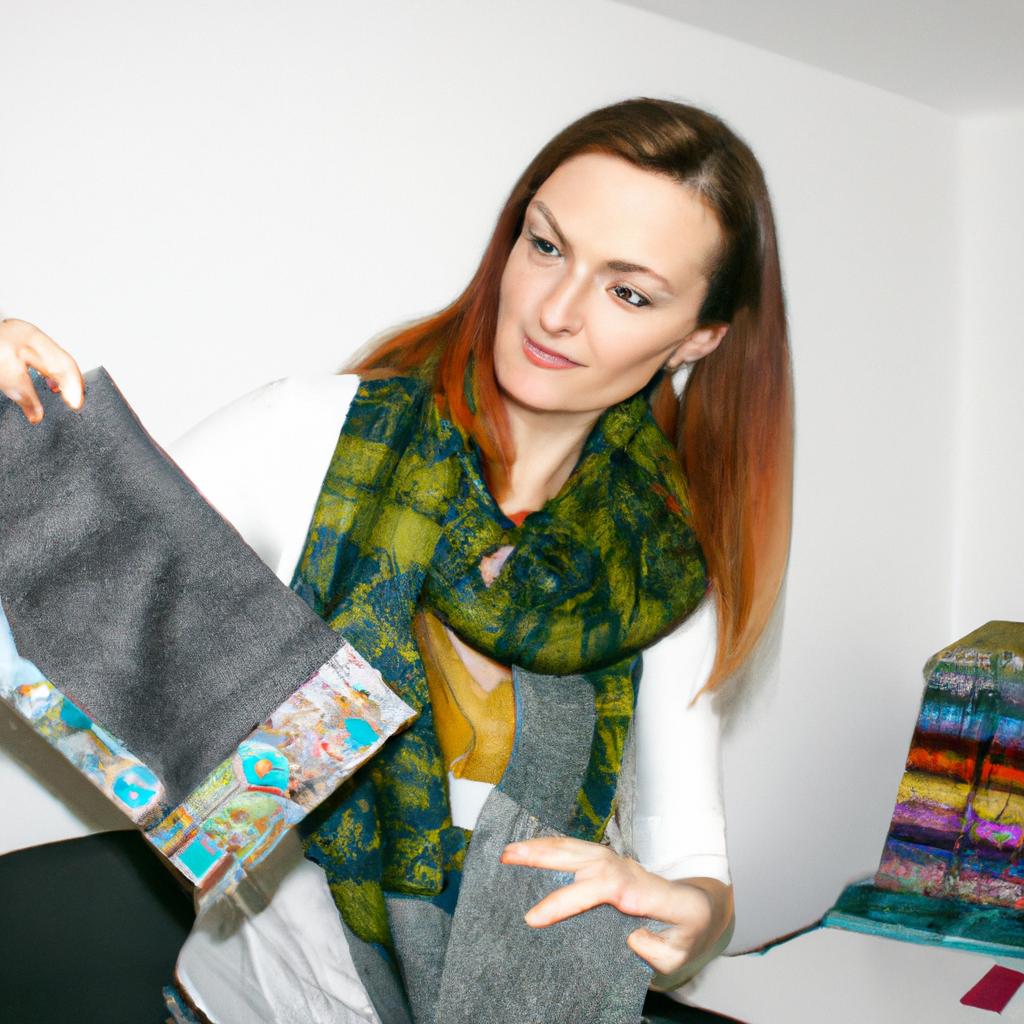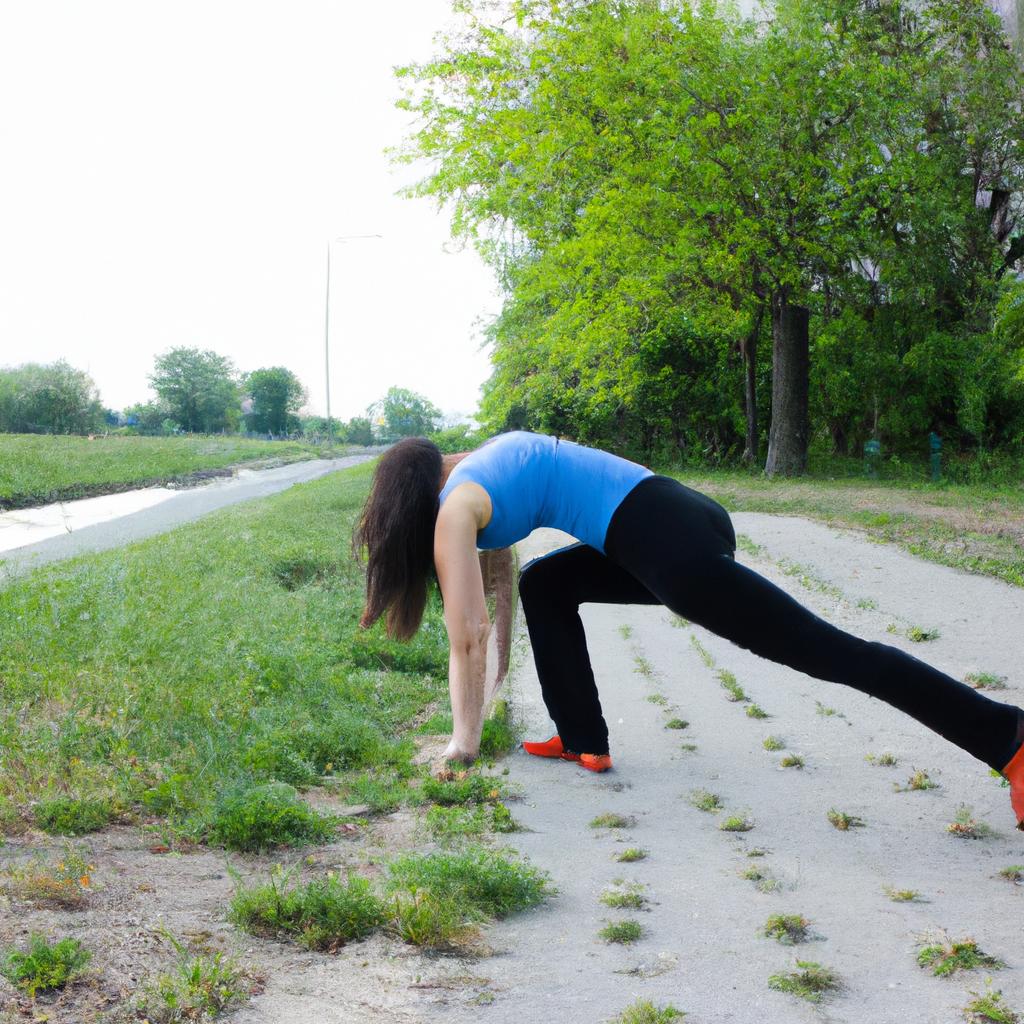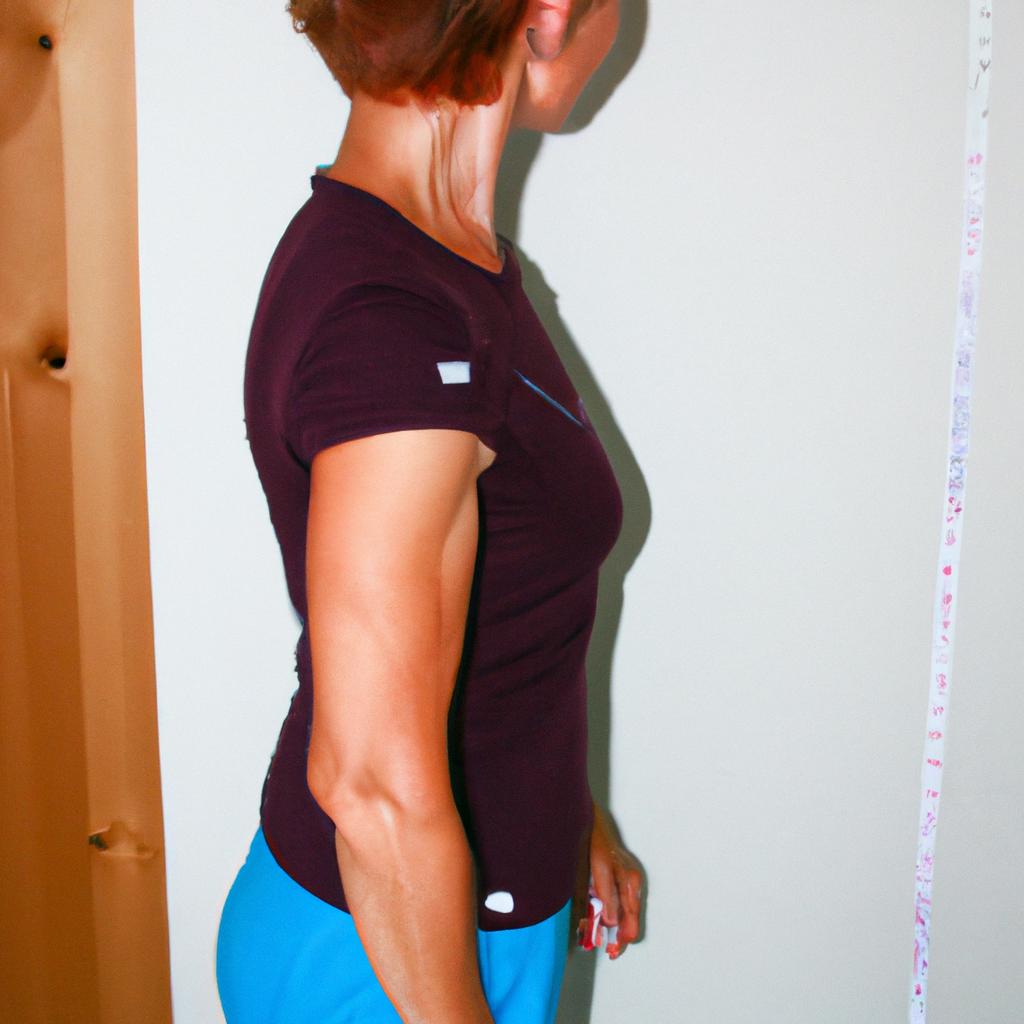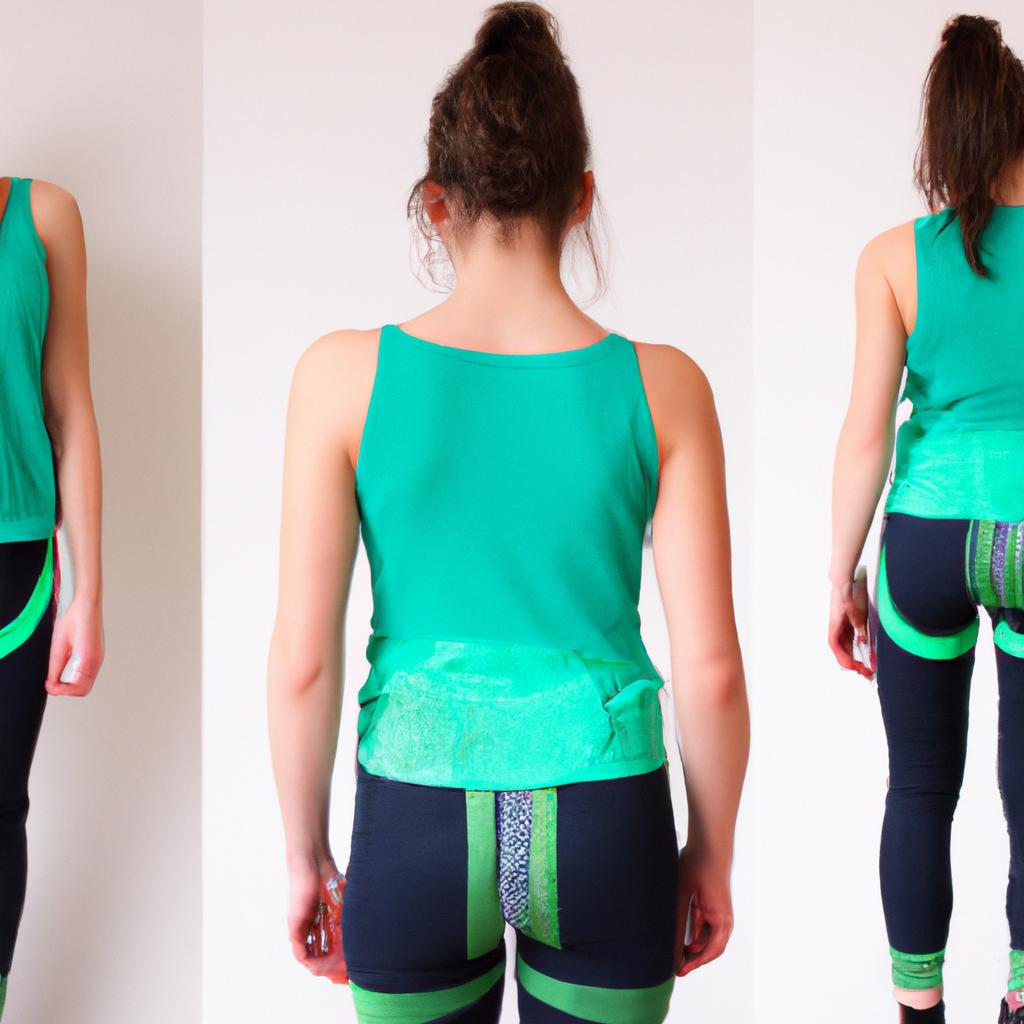Color Options for Women’s Active Wear: A Guide to Choosing the Perfect Hues
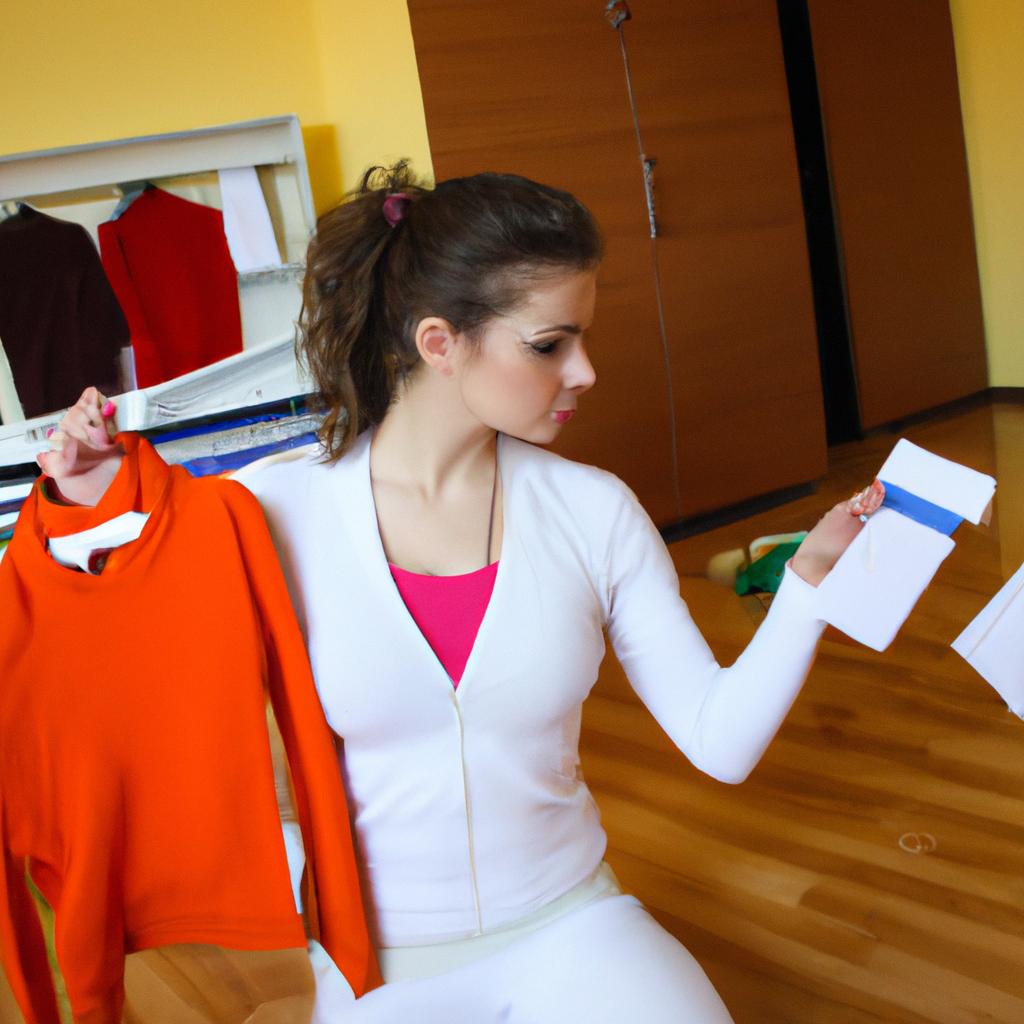
The choice of color in women’s active wear can have a significant impact on the aesthetic appeal and functionality of these garments. With an ever-expanding array of options available, it is essential for women to understand how different hues can influence their overall workout experience. For example, imagine a scenario where two women are embarking on a morning jog. One woman opts for vibrant shades of neon pink, while the other chooses calming tones of pastel blue. While both outfits fulfill the primary purpose of providing comfort and support during physical activity, their color choices evoke distinct emotions and perceptions among themselves and those around them.
In this article, we will delve into the world of color psychology and its implications when selecting women’s active wear. Understanding how various colors affect our mood, mindset, and performance can assist individuals in making informed decisions that align with their personal preferences and goals. Moreover, considering factors such as skin tone, body shape, and specific activities can further enhance one’s ability to choose suitable hues that complement their individuality while maximizing the benefits derived from exercise attire. By exploring the spectrum of colors available in activewear collections, readers will gain valuable insights into how to select the perfect hues that not only reflect personal style but also contribute to achieving optimal performance levels during workouts .
This article aims to provide guidance and recommendations based on color psychology principles for women’s active wear. By understanding the psychological effects of different colors, individuals can make choices that align with their desired mood and mindset during exercise.
For example, vibrant shades like neon pink or electric blue are known to evoke feelings of energy, excitement, and motivation. These colors can be great choices for high-intensity workouts or activities where one wants to feel energized and focused. On the other hand, calming tones such as pastel blue or soft green can create a sense of tranquility and relaxation, making them suitable for activities like yoga or meditation.
Additionally, considering factors like skin tone and body shape when selecting activewear colors can enhance overall aesthetics. Choosing complementary colors that flatter one’s complexion can boost confidence and self-esteem during workouts. Similarly, selecting colors that accentuate positive features or camouflage areas of concern can help individuals feel more comfortable in their attire.
Lastly, taking into account the specific activity or environment in which the activewear will be worn is crucial. For instance, if exercising outdoors under direct sunlight, opting for lighter-colored clothing may help reflect heat and keep the body cooler. On the other hand, if participating in an indoor workout class with dim lighting, choosing brighter hues can aid visibility and create a visually engaging experience.
Ultimately, there is no right or wrong choice when it comes to color selection in women’s active wear. It all depends on personal preferences, goals, and the desired impact one wishes to achieve during their workout sessions. By understanding color psychology principles and considering individual factors such as skin tone and activity type, individuals can make informed decisions that enhance both aesthetic appeal and functionality in their exercise attire.
Understanding Color Psychology
When it comes to choosing the perfect hues for women’s active wear, an understanding of color psychology can be invaluable. Color has a profound impact on our emotions and can influence how we perceive ourselves and others. By harnessing the power of color, you can enhance your performance and feel more confident during workouts.
To illustrate the significance of color psychology, let’s consider a hypothetical scenario. Imagine two women preparing for a high-intensity cardio session at the gym. One woman chooses to wear vibrant red leggings and a matching top, while the other opts for calming shades of blue. As they begin their workout, they may experience different emotional responses based on the colors they are wearing.
To better understand these emotional responses, here is a bullet point list that highlights some common associations with different colors:
- Red: Energizing and stimulating
- Blue: Calming and tranquil
- Green: Refreshing and balanced
- Yellow: Optimistic and cheerful
These associations provide just a glimpse into the vast world of color psychology. To delve deeper, let’s take a look at a table that showcases additional emotions evoked by various colors:
| Color | Emotions Evoked |
|---|---|
| Orange | Energetic |
| Purple | Creative |
| Pink | Playful |
| Gray | Neutral |
As seen in this table, each color possesses its own unique qualities that can elicit specific emotional responses when worn as active wear. Understanding these nuances allows individuals to select colors that align with their desired mindset or goal for their workout.
Incorporating this knowledge into your choice of activewear can have a significant impact on your performance. The next section will explore in depth how different colors affect our physical abilities during exercise sessions. By being mindful of the psychological effects of color choices, you can optimize your workout experience without even taking a step further.
The Impact of Color on Performance
Understanding the psychology behind colors is crucial when it comes to selecting the perfect hues for women’s active wear. By strategically choosing colors that align with desired emotions and outcomes, individuals can enhance their performance and overall experience during physical activities. For instance, imagine a hypothetical scenario where two groups of female athletes participate in a high-intensity workout session wearing different colored outfits. The first group wears vibrant red activewear while the second group sports calming blue attire.
Color Psychology Case Study:
In this case study, researchers observed that participants who wore red reported feeling more energized and driven throughout the workout. Red is often associated with increased heart rate, blood pressure, and adrenaline levels. These physiological responses can contribute to improved endurance and motivation during intense exercise sessions. On the other hand, participants in blue experienced a sense of calmness and relaxation which aided their focus and concentration during mindful exercises like yoga or meditation.
The Impact of Color on Performance:
- Red: Known for its stimulating properties, red has been found to increase energy levels, evoke excitement, and boost confidence. It can be an excellent choice for activities requiring strength, power, or speed such as weightlifting or sprinting.
- Blue: Often associated with tranquility and peace, blue promotes feelings of serenity and reduces anxiety levels. This color is ideal for activities that demand mental clarity, precision, and balance such as pilates or tai chi.
- Green: Symbolizing harmony and nature, green has a soothing effect on both mind and body. It encourages feelings of balance, growth, and stability which make it suitable for outdoor activities like hiking or cycling.
- Pink: Feminine yet empowering, pink combines elements of warmth and playfulness. It can create a positive atmosphere by promoting optimism while reducing stress levels. Incorporating pink into workouts like dance classes or Zumba can enhance enjoyment.
By considering these factors alongside personal preferences, individuals can leverage the impact of color to optimize their performance and achieve desired outcomes. In the subsequent section, we will explore how to choose colors that complement your skin tone, enabling you to make informed decisions when selecting women’s active wear.
Choosing Colors that Complement Your Skin Tone
Imagine this scenario: Jane, an avid runner, decides to invest in a new set of workout clothes. She walks into the store and is faced with rows upon rows of vibrant activewear options. Unsure of which colors would be most beneficial for her performance, she contemplates what impact different hues might have on her mindset and motivation.
Research has shown that color can significantly influence our emotions and behavior. When it comes to women’s active wear, choosing the right colors can enhance not only one’s physical performance but also their mental state during exercise. For instance, studies indicate that wearing red or orange activewear may increase energy levels and stimulate high-intensity workouts. On the other hand, blue or green hues are associated with feelings of calmness and tranquility, making them suitable choices for activities like yoga or Pilates.
To help you make informed decisions about your activewear color choices, here are some key considerations:
- Mood enhancement: Selecting colors that evoke positive emotions such as happiness or confidence can boost mood and overall enjoyment during workouts.
- Visibility: Opting for brighter shades like neon yellow or pink can improve visibility outdoors, ensuring safety while exercising in low-light conditions.
- Sweat concealment: Darker colors tend to hide sweat stains better than lighter ones, providing a more confident appearance throughout intense workouts.
- Personal preference: Ultimately, choose colors that align with your personal style and make you feel comfortable and empowered in your fitness journey.
Consider the following table showcasing a range of popular activewear colors along with their corresponding psychological effects:
| Color | Psychological Effect |
|---|---|
| Red | Increases energy |
| Orange | Stimulates enthusiasm |
| Blue | Instills calmness |
| Green | Promotes relaxation |
| Yellow | Enhances positivity |
By understanding the psychological effects associated with different colors, you can empower yourself to make choices that align with your fitness goals and preferences.
Now let’s delve into some of the current popular color trends in women’s active wear, offering you even more options to consider when selecting the perfect hues for your workout attire.
Popular Color Trends in Women’s Active Wear
Transitioning from the previous section, where we explored the significance of selecting colors based on skin tone, let us now delve into some practical advice for choosing hues that complement your complexion. To illustrate this point further, consider the case study of Anna, a fitness enthusiast with fair skin and cool undertones.
When it comes to determining which colors will enhance your natural beauty, understanding your skin tone is crucial. For individuals with fair complexions like Anna’s, pastel shades are an excellent choice as they create a soft and feminine look. Light pinks, baby blues, and mint greens can bring out a delicate glow in their appearance. Conversely, vivid or dark tones may overpower fair skin tones and appear harsh.
To assist you in making informed decisions about color selection for your activewear wardrobe, here is a bullet-point list summarizing key considerations:
- Consider your undertone: Determine whether you have warm (yellow or peachy) or cool (blue or pink) undertones to guide your color choices.
- Experiment with contrasting hues: If you have light skin tones, try incorporating pops of vibrant colors to add energy and excitement to your outfits.
- Embrace neutrals: Neutrals such as white, gray, navy blue, and black can serve as versatile base colors that pair well with any skin tone.
- Trust your instincts: Ultimately, personal preference plays a vital role in deciding what makes you feel confident and comfortable.
Now let us take a visual approach by exploring the following table showcasing different shades and how they align with specific skin tones:
| Skin Tone | Best Colors | Avoid |
|---|---|---|
| Fair | Pastels | Dark shades |
| Medium | Earthy tones | Neon shades |
| Olive | Jewel tones | Pale hues |
| Dark | Bold colors | Washed-out |
Understanding how colors can interact with your skin tone allows you to make informed choices when selecting activewear that highlights your natural beauty. In the following section, we will explore another exciting aspect of color coordination: how to employ color blocking techniques for a stylish and trendy look.
Transitioning into the subsequent section about “How to Use Color Blocking for a Stylish Look,” let us now delve into an exploration of this popular styling technique without explicitly stating ‘step.’
How to Use Color Blocking for a Stylish Look
Having explored popular color trends in women’s active wear, let us now delve into how you can use color blocking techniques to create a stylish and eye-catching look. By strategically combining different hues, you can enhance your athletic outfits and make a bold fashion statement.
Color Blocking Techniques:
To achieve an appealing aesthetic with color blocking, consider the following key points:
- Complementary Colors: Experiment with contrasting shades that lie opposite each other on the color wheel. For instance, pairing vibrant red shorts with a deep green tank top creates a striking visual contrast.
- Analogous Colors: Opt for colors that are adjacent to each other on the color wheel. This technique offers a harmonious blend of hues while maintaining a cohesive appearance. An example would be selecting navy blue leggings and pairing them with a royal purple sports bra.
- Monochromatic Palette: Stick to various shades of one particular hue by choosing pieces within the same color family. For instance, combine light pink workout pants with a darker magenta jacket for an elegant monochromatic ensemble.
- Bold Contrasts: Embrace high-contrast combinations by juxtaposing bright or neon colors against black or white garments. Pairing electric yellow sneakers with sleek black leggings is an excellent way to add vibrancy and visual interest to your outfit.
Table – Examples of Effective Color Combos:
| Combination | Description |
|---|---|
| Teal + Coral | Energizing and playful |
| Gray + Yellow | Modern yet cheerful |
| Purple + Lime Green | Bold and attention-grabbing |
| Burgundy + Mustard | Sophisticated with a touch of warmth |
Incorporating these color blocking techniques into your active wear outfits can enhance their visual appeal and elevate your style. By thoughtfully selecting colors that complement each other, you can create unique looks tailored to your personal taste.
As we have explored the art of color blocking, let’s now move on to some valuable tips for mixing and matching colors in your active wear outfits. With these insights, you’ll be able to effortlessly curate a versatile wardrobe that suits both your fashion preferences and workout needs.
Tips for Mixing and Matching Colors in Your Active Wear Outfits
Previous section H2:
“How to Use Color Blocking for a Stylish Look”
Next section H2:
“Tips for Mixing and Matching Colors in Your Active Wear Outfits”
Building upon the concept of color blocking, let us now explore some valuable tips for mixing and matching colors in your active wear outfits. By incorporating various hues strategically, you can create visually appealing ensembles that not only boost your confidence but also enhance your overall workout experience.
Section:
To illustrate these concepts, let’s consider the case study of Jessica, an avid fitness enthusiast who enjoys experimenting with different color combinations in her active wear. One example of how she successfully mixed and matched colors was by pairing a vibrant coral sports bra with navy blue leggings. The contrasting colors created a dynamic look that accentuated her figure while adding energy to her workout routine.
When it comes to creating harmonious color schemes in women’s active wear, there are several key factors to consider. Here are four essential guidelines to help you make informed choices when selecting hues:
- Complementary Colors: Combining colors opposite each other on the color wheel creates striking contrasts. For instance, pairing a yellow top with purple bottoms or vice versa can provide an eye-catching effect that adds vibrancy to your outfit.
- Analogous Colors: Selecting shades next to each other on the color wheel creates a more subtle and cohesive look. For example, combining various shades of blues or greens will result in an ensemble that is visually pleasing without being overly bold.
- Monochromatic Colors: Opting for different tones and shades within the same color family can create a sophisticated and streamlined appearance. Consider wearing light gray leggings paired with a dark gray tank top for a chic monochromatic outfit.
- Neutral Colors: Incorporating neutral tones such as black, white, or gray can help balance and ground your active wear ensemble. These versatile colors provide a solid foundation to showcase bolder hues and add depth to your overall look.
To further assist you in selecting the perfect color combinations, refer to the following table which showcases examples of popular women’s active wear colors along with their associated meanings:
| Color | Meaning |
|---|---|
| Red | Energetic, passionate |
| Blue | Calming, trustworthy |
| Green | Refreshing, balanced |
| Purple | Creative, spiritual |
By considering these tips and utilizing the emotional power of different colors, you can create outfits that not only reflect your personal style but also evoke positive emotions during your workouts. Experiment with various color combinations until you find ones that make you feel confident, motivated, and ready to conquer any fitness challenge!
(Note: No conclusion statement is needed as this section serves as a continuation of the previous information.)


